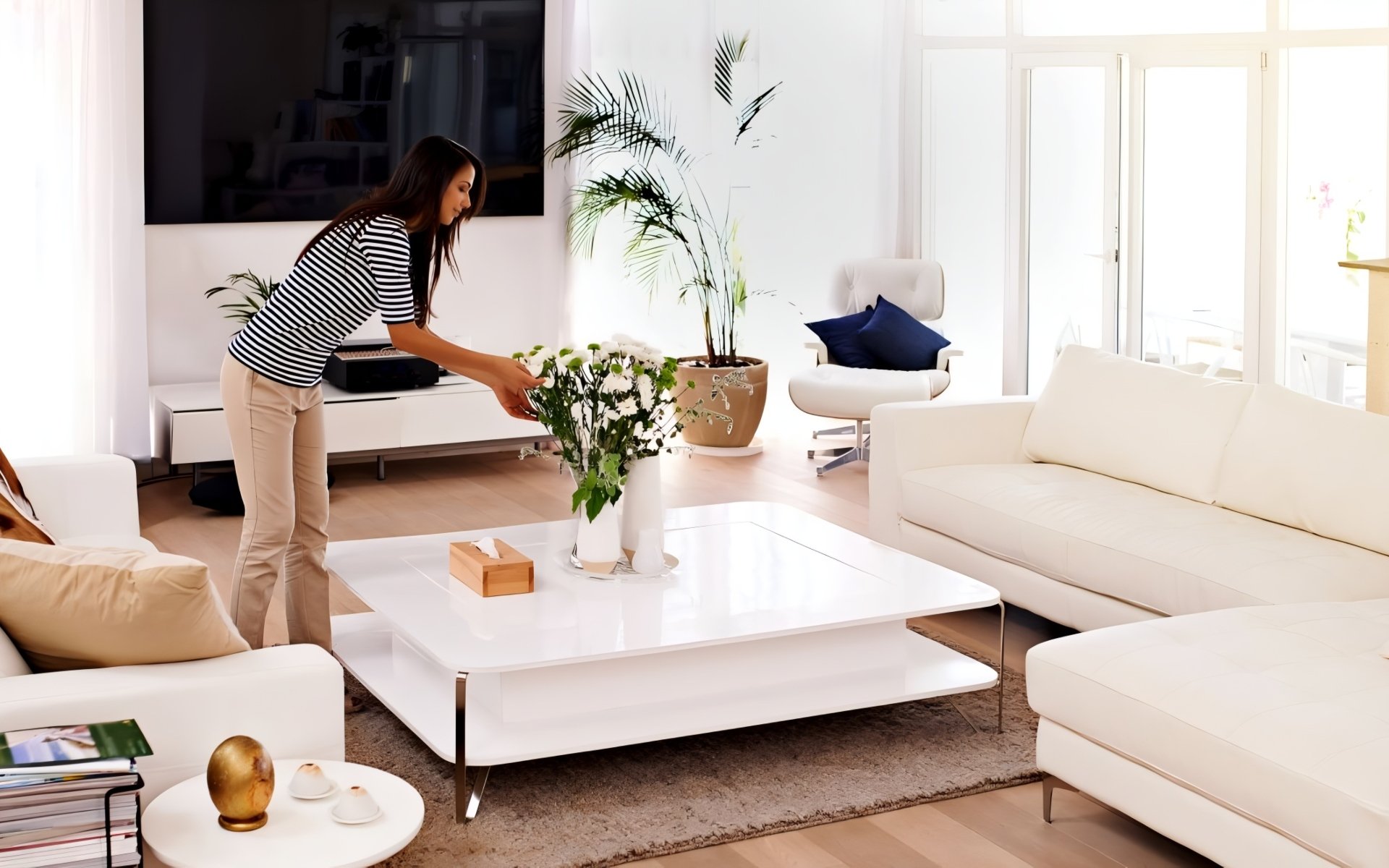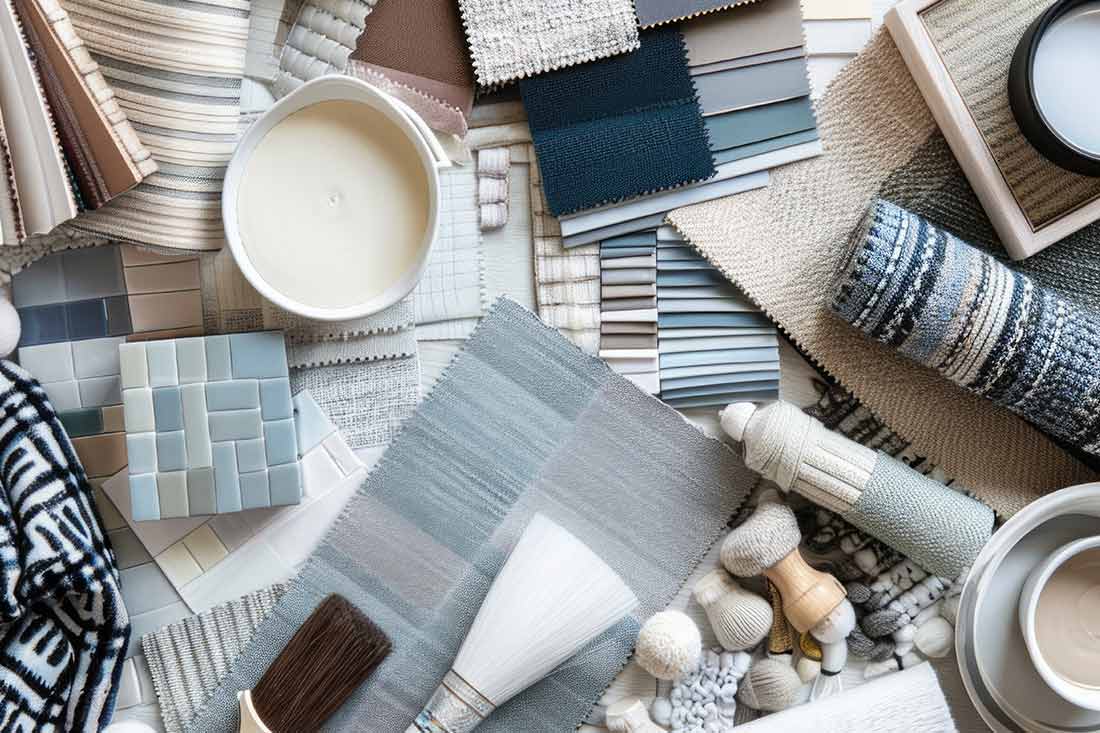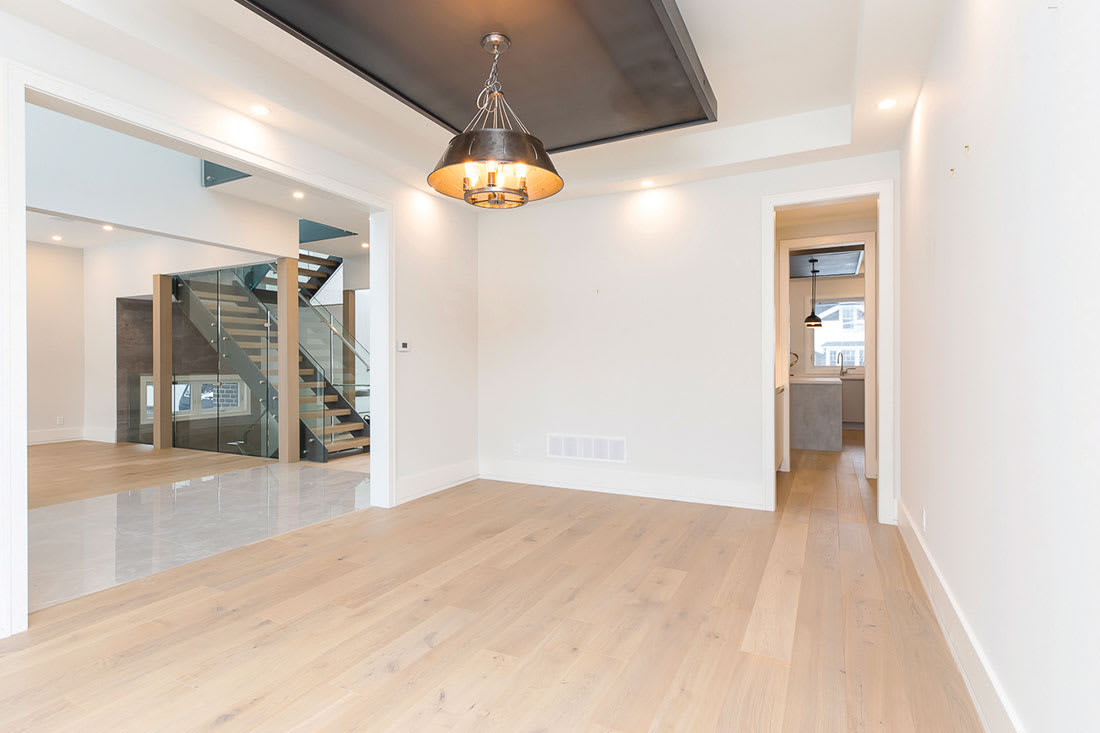First impressions are everything, especially when trying to sell your home in a competitive market. Successful sales require more than just listing the square footage and features. It’s about creating an emotional connection with potential buyers, making them envision a life of comfort, luxury, family and belonging within your walls. This is where the art of home staging takes centre stage.
Home staging is a strategic and nuanced approach to presenting a space. It goes beyond decluttering and rearranging furniture. It’s about harnessing the power of design and psychology to showcase the home’s true potential and elicit emotional responses in buyers. Marta Jurewicz and Sylwia Duszlak, stagers at Sam McDadi, shed light on the process:
“Creating a sense of warmth, belonging, and luxury involves a thoughtful blend of design elements and psychological triggers,” says Jurewicz.
In this blog, we will explore some of the key features every homeowner and stager should consider when selling a home.
Setting the Mood with Colour
Jurewicz emphasizes the importance of colour palettes in setting the stage. Warm colours like gentle whites, soft beiges, and warm greys, accented with natural woods, clay tones, and muted golds, create a welcoming and inviting atmosphere. This is backed by science. Studies on
colour psychology suggest that warm tones stimulate energy and evoke feelings of optimism, security, and comfort, all highly desirable qualities in a potential home.
Moodboard pairing colours, textiles and patterns.
Strategic Approach to Lighting
Strategic lighting plays a crucial role in creating ambience, influencing not only the visual appeal of a space but also the well-being of its occupants and, by extension, visitors. Layered lighting, with a combination of ambient sources like chandeliers and wall sconces, provides a soft, diffused glow that fosters relaxation and comfort. Accent lighting then highlights architectural traits and artwork, drawing the eye to specific areas and adding visual interest. This multi-layered approach, incorporating
the psychology of light, creates a warm and inviting atmosphere that fosters social connections, sparks excitement, and showcases the property’s best attributes.
Tell a Story With Texture
The textures incorporated into the space further enhance the feel. Plush fabrics like velvet, cozy throws, and rugs add a layer of comfort and warmth. Natural materials like wood, stone, and plants bring the outdoors in and inspire a sense of organic tranquillity. Richly finished wooden furniture adds a touch of refinement and sophistication.
“Comfortable yet stylish furniture is arranged to create intimate, conversational areas,” says Jurewicz, highlighting the importance of furniture arrangement.
“This not only makes the space feel more inviting but also subtly suggests the home’s functionality as a place for gathering and entertaining,” adds Duszlak.
Personal Touches Should Have Purpose
While a staged home shouldn’t feel impersonal, it’s equally important to avoid overwhelming buyers with personal belongings. A curated selection of coffee table books or elegant accessories adds a touch of personality and bespoke charm without detracting from the overall vision. However, cluttering a space with personal photos can create a barrier for potential buyers. From a buyer’s perspective, seeing another family in a space prevents them from fostering a connection.
Luxury Lies in the Details
Art pieces and stylish decor items elevate the space, while strategically placed mirrors can enhance the feeling of light and spaciousness.
“Inviting scents and soft instrumental background music create a calming atmosphere,” says Duszlak.
Similar to staying at a five-star hotel,
scent triggers a memory response that most sellers might overlook but leaves a lasting impression on potential buyers. A clean home with fresh, familiar scents captures positive emotions that could potentially translate to offers. Attention to detail can make all the difference in separating your home from other properties on the market. These subtle touches go a long way in creating a luxurious and serene environment.
Small upgrades can also make a big difference. Duszlak suggests that features like a well-organized closet or a spa-like bathroom can significantly enhance the home’s appeal. Energy-efficient upgrades like smart thermostats and modern appliances also resonate with environmentally conscious buyers.
Before and after staging a home for sale.
Create an Outdoor Oasis
The outdoors shouldn’t be neglected. Staging patios and decks with comfortable furniture, potted plants, and ambient lighting showcase the property’s potential for outdoor entertaining and relaxation. Even small balconies can be transformed into charming havens with a bistro set and a few strategically placed plants.
Look for hardy plants that don’t need much maintenance. Be sure to understand how much sunlight your spaces get in order to pick the right plants.
The Secret Sauce: Creating an Emotional Connection
Ultimately, the goal of home staging is to create an emotional connection with potential buyers. Jurewicz explains:
“Design elements that tell a story help buyers to imagine a high-end lifestyle.”
A reading nook or a meditation corner can offer a peaceful retreat, a space where buyers can imagine themselves relaxing and finding solace. Lifestyle vignettes integrated throughout the home, like a stylish home office or a well-appointed kitchen, inspire buyers to picture themselves living their ideal lifestyle within the space.
By strategically combining these attributes, home stagers create an environment that showcases the property’s potential and appeals to buyers’ emotions. This approach makes them fall in love with the home, not just its size, fixtures, and other tangible features. If done well, your home has the potential to increase both the final sale price and the speed at which the home is sold. So, when it comes to selling your property, remember that the psychology of home staging can be the secret weapon that helps you attract top dollar.





